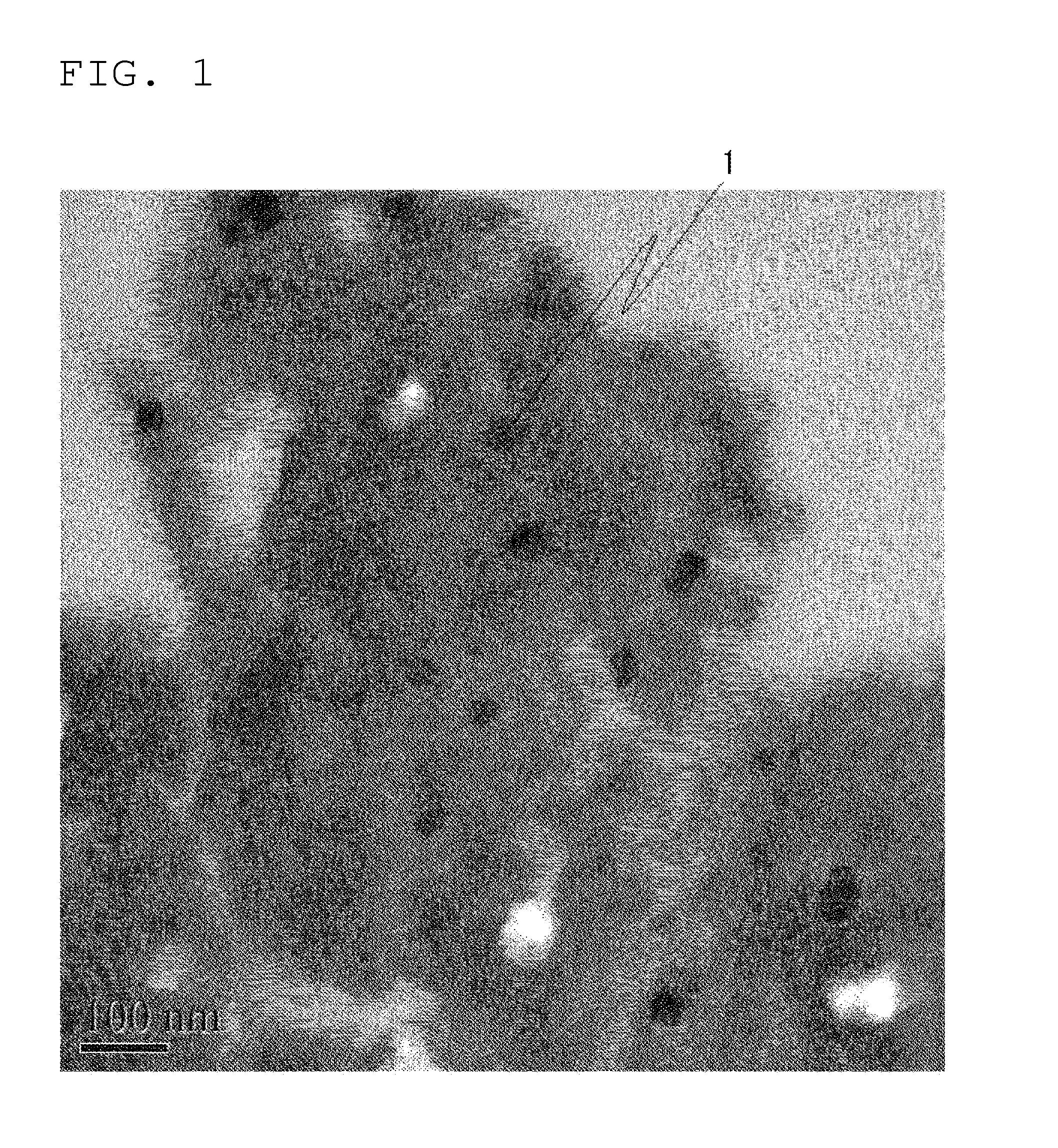Pigment composition for printing ink, method for producing the same and method for producing printing ink
a pigment composition and printing ink technology, applied in the direction of inks, coatings, applications, etc., can solve the problems of deterioration of resin performance, deterioration of hue, viscoelasticity and emulsification of printing inks, and excessive time and labor, so as to prevent deterioration of productive efficiency, promote production efficiency, and improve the effect of color strength
- Summary
- Abstract
- Description
- Claims
- Application Information
AI Technical Summary
Benefits of technology
Problems solved by technology
Method used
Image
Examples
production example 1
Production of Crude Copper Phthalocyanine
[0112]4,000 parts of a mixture of 1,218 parts of phthalic anhydride, 1,540 parts of urea, 200 parts of anhydrous cuprous chloride, 5 parts of ammonium molybdate and HS-SOL-700 (manufactured by HwaSung Corporation) as an inert solvent was charged in a reactor, heated to 200° C. while stirring and then reacted at the same temperature for 2.5 hours. After the completion of the reaction, the inert solvent was distilled off under reduced pressure and the remaining reaction product was added in 8,000 parts of 2% hydrochloric acid (aqueous solution), followed by stirring at 70° C. for 1 hour and further suction filtration to obtain a cake. Subsequently, the resultant cake was added in 8,000 parts of an aqueous 2% sodium hydroxide solution, followed by stirring at 70° C. for 1 hour, neutralization and further suction filtration. The cake thus obtained was well washed with warm water at 80° C. and then dried to obtain a crude copper phthalocyanine (pu...
example 1
Production-1 of Pigment Composition for a Printing Ink
[0113]The crude copper phthalocyanine of Production Example 1 and calcium carbonate were mixed at the ratio shown in Table 1 so that the weight of the objective pigment composition for a printing ink becomes 500 g, placed in an atriter having an inner volume of 25 liter (including 67 Kg of steel balls having a diameter of ⅜ inch) and then milled at 200 rpm and an inner temperature of 80 to 110° C. for 60 minutes to obtain a pigment composition for a printing ink. An average particle diameter of primary particles of copper phthalocyanine in the resultant pigment composition for a printing ink, a ratio of α type crystal / β type crystal, and the existence of calcium carbonate particles contained in an aggregate formed by aggregation of copper phthalocyanine particles were confirmed by TEM micrograph (FIG. 1). The average particle diameter is shown in Table 1. FIG. 1 is a sectional view showing a micrograph taken with a transmission e...
production example 2
Production of Printing Ink Varnish
[0116]45 parts of a rosin-modified phenol resin (Beccasite F7310, manufactured by DIC (former Dainippon Ink and Chemicals, Incorporated)), 15 parts of soybean oil and 39 parts of AF Solvent 7 (manufactured by NIPPON OIL CORPORATION) were charged, heated to 180° C. and allowed to stand at the same temperature for 50 minutes, and then 1 part of aluminum chelate (aluminum, diisopropoxide, monoethyl acetate) as a gelling agent was charged, followed by stirring at 180° C. for 30 minutes to obtain a varnish for a printing ink.
PUM
| Property | Measurement | Unit |
|---|---|---|
| particle diameter | aaaaa | aaaaa |
| particle diameter | aaaaa | aaaaa |
| particle diameter | aaaaa | aaaaa |
Abstract
Description
Claims
Application Information
 Login to View More
Login to View More - R&D
- Intellectual Property
- Life Sciences
- Materials
- Tech Scout
- Unparalleled Data Quality
- Higher Quality Content
- 60% Fewer Hallucinations
Browse by: Latest US Patents, China's latest patents, Technical Efficacy Thesaurus, Application Domain, Technology Topic, Popular Technical Reports.
© 2025 PatSnap. All rights reserved.Legal|Privacy policy|Modern Slavery Act Transparency Statement|Sitemap|About US| Contact US: help@patsnap.com

